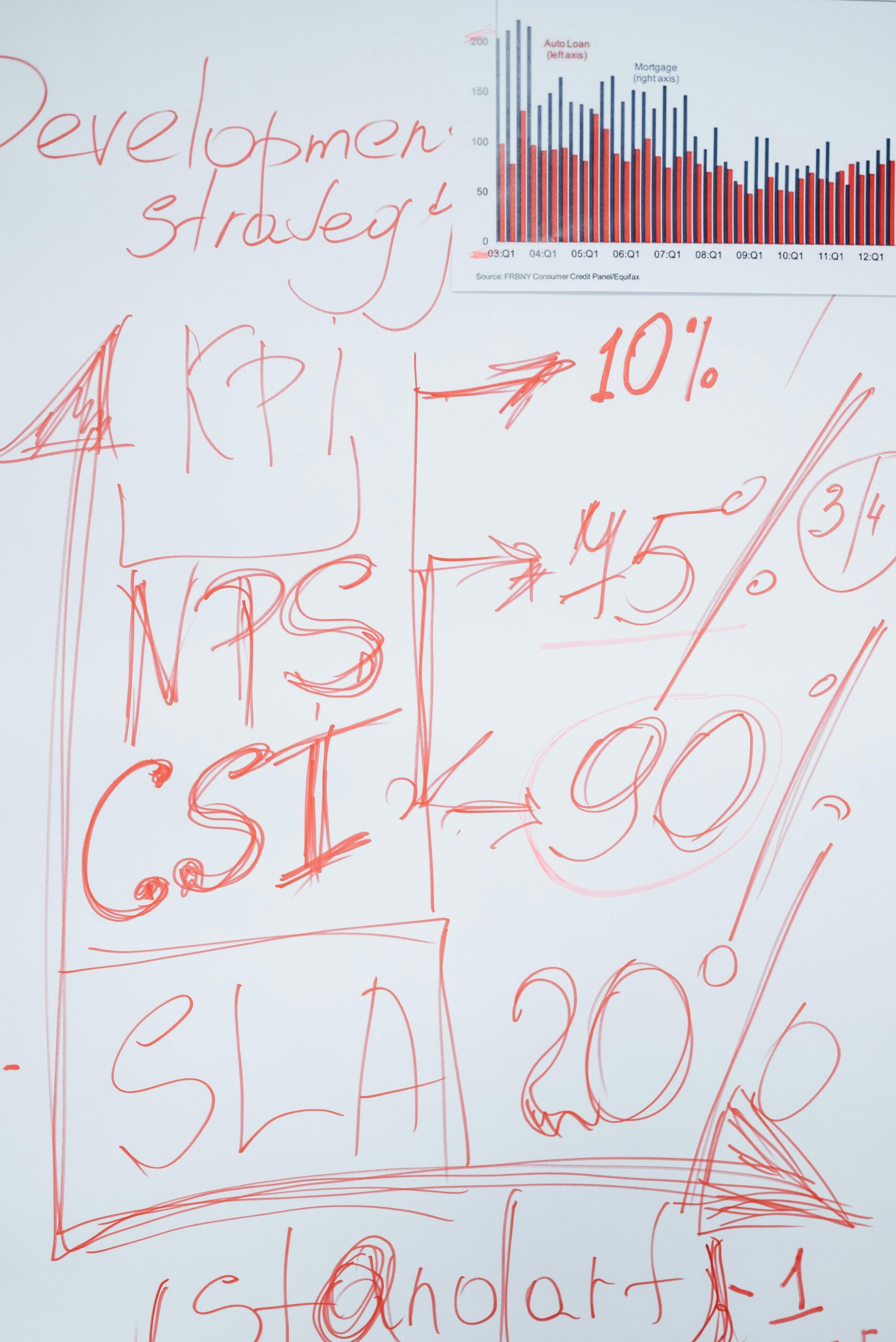
March 17th, 2025


Written by Bobby Abrams
When it comes to Google Shopping, small adjustments can lead to significant differences in your campaign performance and overall growth. In the rapidly evolving world of digital retail, a robust Google Shopping strategy is not just about setting up campaigns—it’s about a continuous process of analysis, innovation, and strategic tweaks designed for both immediate efficiency and sustainable, long-term growth. In our experience working with businesses across retail, e-commerce, and fashion, we have learned that success lies in blending data-driven insights with creative tactics. In this blog, we share innovative tactics that can elevate your Google Shopping strategy to new heights.

The digital shopping space is more competitive than ever before. With online consumers expecting personalized and relevant advertising experiences, it becomes crucial to optimize every aspect of your Google Shopping strategy. The landscape continues to evolve with frequent updates, including changes in bidding strategies, audience targeting, and technology trends that increasingly integrate machine learning and automation.
Successful marketers recognize that Google Shopping is not a one-size-fits-all channel. Instead, it operates at the intersection of product presentation, data accuracy, and efficient campaign structuring. Here are some factors that can influence performance:
Your product feed is the lifeblood of your campaigns. It requires regular audits and updates to ensure all product information remains accurate and optimized.
High-quality images and detailed product descriptions can dramatically improve click-through and conversion rates.
The way you manage bids and adjust your budget across products and campaigns makes a defining difference in your ROI.
Google penalizes for low-res or staged images. Shoot for real, clear photos that match your brand's tone.
Your product feed is the foundation of every Google Shopping campaign. More than just a list of items, it’s an opportunity to communicate with prospective customers through accurate titles, rich descriptions, and compelling visuals. Here are several tactics to ensure your feed is performing at its best:
Maintaining an error-free feed is one of the most important steps in avoiding wasted ad spend. We recommend setting up regular audits to catch any missing or outdated information, ensuring that product titles, descriptions, prices, and availability details remain current.
Embed relevant keywords naturally into your product titles and descriptions. By understanding the search behavior of your audience, you can align your content with what potential customers are searching for. However, avoid keyword stuffing—keep the language natural yet optimized.
Product images are the first impression a consumer receives. Use clear, high-resolution images that highlight your product’s features. In many cases, a well-lit and professionally shot image can be the difference between a click and a pass. Consistency in image style also reinforces brand identity.

A sound campaign setup and an effective bidding strategy are paramount to gaining efficiency in your Google Shopping efforts. Here we detail ways to align your campaign structure with your overall business goals:
One of the primary tactics to improve targeting is segmenting your campaigns. By dividing products into granular groups based on categories, price ranges, or profit margins, you can tailor bids more precisely and ensure that your budget is focused on the items with the highest potential return.
Utilizing smart bidding strategies can bring significant efficiency to your Google Shopping campaigns. Consider these tips:
Use Google’s automated bidding solutions when possible. These algorithms adjust bids in real time based on conversion likelihood.
Recognize the role of device type in conversion behavior. You might need to adjust bids for mobile devices differently from desktop computers.
Analyze historical data to identify patterns. Increasing bids during peak shopping hours or days can yield improved performance.
Don’t underestimate the power of negative keywords. They help filter out unwanted traffic and ensure your ads appear only to users with genuine purchase intent. Regularly updating your negative keyword list can prevent budget drain and improve overall campaign efficiency.
In today’s fast-paced digital environment, efficiency is key. With an increasing number of automation tools and machine-learning solutions available, it’s essential to leverage technology to streamline your processes without sacrificing creativity. Below are some advanced tactics to drive efficiency:
Automating routine tasks can significantly reduce manual work. Here are several smart tools and techniques:
Set up automated rules for bid adjustments, budget reallocations, and ad scheduling based on performance metrics.
Incorporate dynamic remarketing to target potential customers who have already shown interest in your products. Retargeting ads with
Incorporate dynamic remarketing to target potential customers who have already shown interest in your products. Retargeting ads with personalized messaging can lead to higher conversion rates.
Utilize feed management solutions that consolidate and optimize your product data across various platforms.
The digital marketing space is increasingly embracing artificial intelligence. By integrating AI-driven insights into your Google Shopping campaigns, you can uncover trends and patterns that might otherwise go unnoticed. For instance:
Even with automation, the importance of constantly testing new ideas cannot be overstated. A/B testing various elements of your campaigns—from ad creatives and headlines to bid strategies—helps determine what resonates best with your audience. Consider these areas for experimentation:
Data is at the heart of every successful digital campaign. Detailed analytics enable you to refine your strategy continuously and identify both strengths and areas for improvement. Here’s how to make your data work for you:
Knowing which metrics matter to you is the first step towards success. Establish key performance indicators (KPIs) that align with your business objectives, such as:
Measures how effectively your ads are capturing attention.
Indicates the percentage of visitors taking a desired action once they click your ad.
The cost it takes to acquire a customer.
Reflects the overall profitability of your campaigns
Modern tools provide real-time insights that allow marketers to react quickly. From Google Analytics to more specialized reporting software, these tools help you:
One often overlooked aspect of analytics is customer feedback. Engaging with your customers can reveal unexpected opportunities for optimization:
While it might be tempting to focus solely on immediate gains from your campaigns, a sustainable strategy also demands a long-term vision. The tactics you apply today should not only deliver short-term results but also lay the foundation for ongoing success. Here are some strategies to balance these objectives:
The digital marketing landscape is dynamic. What works well today might become obsolete tomorrow. Therefore, allocate time and resources toward ongoing education and experimentation. Stay informed about the latest trends, algorithm updates, and consumer behavior shifts. This proactive approach ensures that your Google Shopping strategy evolves along with the marketplace
Your product feed should adapt to changes effortlessly. Use automated feed management tools that update your inventory and pricing in real time, and set processes in place to refresh images and product descriptions periodically. A resilient feed not only minimizes manual errors but also reinforces the confidence of potential customers in your offerings.
Understanding seasonal trends is essential for long-term planning. Identify peak shopping periods and plan special promotions or creative ad campaigns around these dates. Here are some ideas to help you plan effectively:
Your Google Shopping campaign is just one piece of your larger digital marketing puzzle. Integrate your shopping campaigns with other channels like SEO, PPC, and email marketing to create a unified brand experience. This not only enhances the impact of each channel but also helps in cross-promotion, driving more comprehensive results over time.

Innovation is as much about creativity as it is about data and automation. While technical optimizations are critical, creative aspects of your Google Shopping campaign can capture the imagination of potential customers and drive engagement. Consider the following creative tactics:
For many businesses, the creative assets—images, headlines, and descriptions—can be the deciding factor in a customer’s click. Dynamic Creative Optimization (DCO) allows you to serve personalized creatives based on a user’s behavior, location, and preferences. With DCO, consider the following:
Consumers today heavily rely on peer feedback before making a purchase decision. Make sure your ads reflect real user reviews and ratings where possible. Although Google Shopping ads have limitations in this area, you can still experiment with:
Finally, do not view your Google Shopping strategy in isolation. Sync your messaging and visuals across multiple digital channels to create a consistent customer journey. Examples include:
In this section, we provide a detailed guide to help you implement the innovations described above. The following steps are designed for both the beginner and the seasoned marketer who wants a clear roadmap:
Begin by thoroughly auditing your current Google Shopping campaigns. Identify gaps in your product feed, campaign segmentation, and bidding strategies. Tools like Google Merchant Center and Google Analytics are critical during this phase. Questions to ask include:
Based on your audit, make necessary adjustments to your product feed. Ensure that every product detail—from images to pricing—is carefully updated. Use automation tools to assist in regular feed updates and maintenance. Maintain clear product categories and tags to facilitate smoother campaign segmentation.
Segment campaigns based on product categories, price ranges, and other relevant attributes. This refined grouping allows for better targeting and more precise bid adjustments. Set up separate campaigns for high-performing products versus new, seasonal items to manage budgets effectively.
Implement A/B tests for ad creatives, bidding methods, and audience targeting. Track performance diligently and use data insights to inform future adjustments. Schedule regular review sessions, and don’t be hesitant to pivot if a particular strategy isn’t yielding the desired results.
Introduce automation where feasible. Use rules for bid adjustments and establish triggers for negative keyword updates. Implement machine learning tools that can analyze real-time data, automatically suggesting changes or even making minor adjustments on the fly.
Finally, establish a routine reporting system for continuous monitoring. Identify key performance trends and compare them with your established KPIs. Use these insights to refine your strategies continuously. Consider setting quarterly goals and evaluating your progress through detailed performance reports.
The pursuit of immediate efficiency should never overshadow your long-term objectives. A successful Google Shopping campaign dovetails with broader business goals, building brand equity while delivering robust sales figures.
Your Google Shopping strategy is most effective when integrated with other digital marketing channels. Here are a few ways to ensure synergy:
Use insights from organic search to fine-tune your product descriptions and ad copy. A well-organized SEO strategy feeds relevant traffic into your paid campaigns, increasing overall visibility..
Develop blog posts, infographics, and case studies that underline your expertise. This helps build trust and reinforces the messages in your Shopping ads.
Leverage segmented email campaigns to promote products that have performed well on Google Shopping, driving repeat traffic to your site.
Building lasting customer relationships requires more than just one-off sales. A strategic follow-up process is key:
Elevating your Google Shopping strategy is an ongoing journey that involves a mix of technical optimization, creative innovation, and, most importantly, a deep understanding of your customers. By refining your product feed, organizing your campaigns effectively, leveraging automation and machine learning, and integrating the approach with broader digital marketing efforts, you’ll be well-positioned for both immediate efficiency and sustainable, long-term growth.
At EClickPro, we have seen firsthand how small changes can yield remarkable benefits—from enhanced click-through rates to significant improvements in ROAS. Our commitment to transparency and measurable results drives us to continually innovate and refine our strategies, ensuring that each campaign not only meets but exceeds expectations.
If you’re ready to take your Google Shopping campaigns to the next level, consider exploring our services for tailored SEO, PPC, and email marketing strategies, all designed to optimize your online presence and drive exceptional growth. Learn more at EClickPro and request your free 24-hour audit to discover the opportunities waiting for your business.
By adopting these innovative tactics and grounding your strategy in robust data analysis, you can build a resilient Google Shopping framework that both drives short-term gains and lays the groundwork for enduring success in the dynamic digital landscape.
Remember, while it may seem daunting to overhaul your approach, each incremental change contributes to a larger, more effective strategy. With the right balance between efficiency and creativity, your Google Shopping campaigns have the potential to not only perform exceptionally well today but also adapt and thrive as new trends and technologies emerge.
We hope these insights empower you to rethink your current approach and implement techniques that drive measurable improvement. Continuous learning and adaptation are your most powerful tools in a competitive digital marketplace—and we’re here to support you every step of the way.
Contact us today to learn more about how our expert team can help elevate your Google Shopping strategy and achieve sustained growth in an ever-evolving market.

Bobby Abrams specialises in helping businesses achieve better results. With a decade of sales and consulting experience, he has worked with hundreds of companies across different sectors. Bobby is passionate about using the latest technology to shape strategy and works closely with expert teams to deliver impactful projects on behalf of his clients.
The information on this website is for general guidance only. EclickPro provides digital marketing services including SEO, Google Shopping, and Meta Ads, but results vary by client and are not guaranteed. We do our best to ensure accuracy, but we do not accept liability for actions taken based on this content. For personalised advice, please contact us directly.